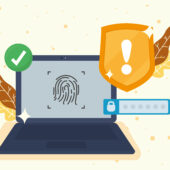Most people and businesses that use uniform and linen delivery, landscaping and pest control, cleaning and janitorial services, and other itinerant services don’t appreciate the complexity of the work involved in ensuring that the right people get to the right jobs at the right time. And that’s just how it should be – as an on-site service provider, you don’t want your clients to worry about whether the ETAs provided to them are accurate; you want them to be sure that you’ve taken care of them.
One only has to look under the hood, and it’s clear how complicated it all can be. The ability to create and execute efficient service delivery routes may require you to consider service times, frequency of service, driver qualifications, traffic patterns, and a host of other variables to ensure excellent customer service and sufficient route density. Effectively separating customers into territories and routes manually are impossible in most cases, and even many software solutions don’t allow for such planning in a reasonable amount of time.
Whether you’re supplying uniforms to food service companies or scheduling carpet cleaning in office parks, you need to overcome complexity and achieve real efficiency in delivery at scale. How to achieve this? Pay attention to the following features of field service routing technology.
Fast, accurate route optimization
Obviously, the ability to create tight and efficient routes is paramount for a routing-based business. For this to happen, your routing engine must be fast and accurate.
Let’s look at these two criteria in turn:
Speed: If the routing process takes too long-whether it’s days of planning new routes or simply hours of work creating courses with software-you, you lose the incentive to do it as often as necessary. You may re-route only a few times a year. Conversely, when it takes minutes to create a new route, you can create new ways every time your business changes. Moreover, you can even run “what-if” scenarios to test potential alternatives to your current plan.
Accuracy: By accuracy, we mean accurately predicting shipping and service times to ensure your technicians arrive at the exact time they are supposed to. This allows you to avoid over-scheduling or under-scheduling staff and provide reliable customer service. This is where AI and machine learning can play an essential role in predicting arrival times, despite many complex variables.
Effective territory planning
If your business involves splitting coverage areas into sales territories, the effectiveness of organizing those territories will play a massive role in your success. (If your company does not include sales territories, skip to the next section.) This is where many of the challenges of route planning are compounded. You need to consider:
- Customer demands for day and time
- frequency of service
- equipment availability
- equipment performance
- route density
- The balance between the areas.
And all of this needs to be considered over several weeks. As you can imagine, it’s easy for inefficiencies to creep into territories that are planned or maintained manually – and if you don’t optimize them, they’re likely to become less efficient over time as minor adjustments accumulate.
That’s why it’s so important to find software that explicitly integrates territory planning weekly with the constraints of daily route planning. When you can automatically generate sales territories that quickly turn into daily routes for your technicians, you can avoid the kinds of sales territories that look good on paper but don’t work daily. Ideally, your technology should show you a baseline of the environment for your current plans and then automatically optimize and show you the difference.
The last part is essential because it allows you to easily visualize which customers need to be notified that they will be on the new routes.
Real-time flexibility
Of course, anyone in the field of customer service business knows that there is a big difference between planning and executing. A typical pest control client may suddenly have an infestation and need to be put on the itinerary unexpectedly. Or carpet cleaning may take much longer than expected for one reason or another. When that happens, your software should allow you to detect the problem as quickly and efficiently as possible, take swift action to keep your plans on track and ensure your customers feel like they’re getting the excellent service they expect.
Technologically, it comes down to a few things:
Real-time data streams: When your technology can collect vast amounts of data from locations and compile it instantly, you can track the status of each job in real-time and even track changes in arrival times throughout the day. If a technician is running late, you can alert the customer and offer to reschedule the appointment for another day.
Communication between driver and technician: Where does all of the above data come from? They must come from drivers and technicians in the field, which requires thorough communication. Dispatchers and managers should be able to see driver location and status updates throughout the process and communicate directly with the driver via instant messaging if necessary.
Intuitive user interface: Not all data is created equal. Or rather, not all ways of displaying data are the same. If you have to look for the information you need on several screens or even in several different applications, you’re much less likely to make adjustments in time. Conversely, suppose your technology has a clean, intuitive user interface for this particular use case. In that case, you’ll be able to get the correct data at the right time for all your service operations. Naturally, you will also want the UI to provide easy routing and route adjustments if you need to respond to any exceptions by sending an updated route to a technician.
Seamless integration
Even with a seamless route, your service operations only happen in a vacuum. Instead, they are part of more extensive business processes supported by upselling, cross-selling, or follow-up with customer service or other teams. This means that service delivery information must be readily available to other groups, and data from different areas must be available in your route management technology. Otherwise, you’ll find yourself in a data and decision-making silo, preventing you from serving customers effectively.
How can Iskedez Solutions help?
Our route optimization tools assist dispatchers and route planners rapidly and efficiently calculating the most cost-effective routes for their drivers. It also equips them to react quickly to changes in delivery windows and revise route plans in real-time as and when circumstances change.
Our routing program, fleet management, and GPS monitoring software allow fleet managers to optimize driver management and prepare for potentially changing business needs.


